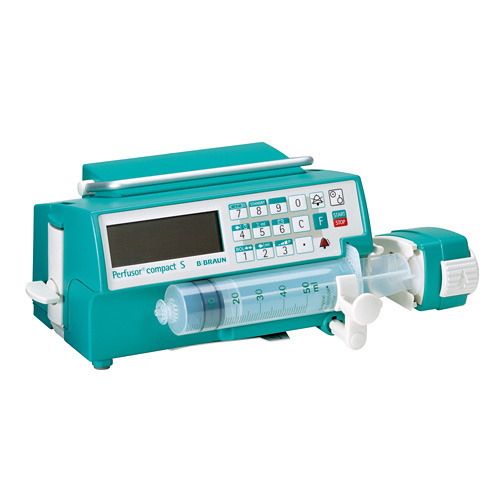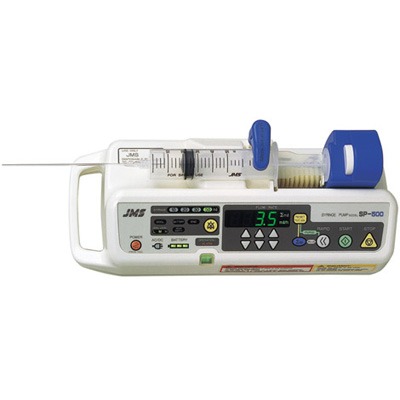پمپ سرنگ
پمپ سرنگ
پمپ سرنگ ( Syringe pump ) پمپی است که برای تزریق مایعات به بدن (همانند
داروها، غذای مایع ،گلوکز،محلول نمک و …) به صورت هوشمند با حجم مشخص و
در زمان مشخص استفاده می گردد. بر رویپمپ سرنگ امکان نصب سرنگ های
مختلف با اندازه های متفاوت (10 ، 20 ، 30 ، 40 ، 50 سی سی ) وجوددارد.سرعت
تزریق مایعات به بدن را می توان با سرعت حرکت پیستون تنظیم نمود. یک سنسور
فشار که فشارانتهای سرنگ را اندازه می گیرد، اتصال صحیح سرنگ را نشان
خواهد داد .
پمپ سرنگ
سیستم های تزریق با چه هدفی بکار گرفته می شوند ؟
سیستم های تزریق با این هدف بکار گرفته می شوند که تزریق را با سرعت معین
و میزان مشخصی از مادهتزریقی بر حسب تعریف کاربر انجام دهند. این دستگاه
حجم معینی از یک ماده را در بازه زمانی مشخص و بافشار کنترل شده برای اهداف
تشخیص، پیش درمان و یا درمان تزریق می کند. ثابت نگه داشتن پارامترهایخون
همچون PH خون ، فشار ، ویسکوزیته و قندخون از اهمیت برخوردار است .برخی
داروها دارای تأثیر ناگهانی بر پارامتر های خون هستند که تغییر آن ها بر کل
سیستم بدن تأثیر ناگهانیبر پارامترهای خون هستند که تغییر آن ها بر کل سیستم
بدن تأثیر می گذارد. به عنوان نمونه می توانداروهای فشار و آنتی بیوتیک ها را نام
برد که بر سرعت انعقاد خون تأثیر می گذارند. چنین دراوهایی به دقت وکنترل بالا
بر روند تزریق نیاز دارند.
اصول عملکرد پمپ سرنگ
سرنگ پلاستیکی حاوی مایع تزریقی در قسمت نگهدارنده قرار داده می شوند، یک
تیوپ به همراه ستنگهدارنده توسط یک سوزن یا کانولا ( (Cannulaبه رگ بیمار
متصل می گردد. پس از تعییین نرخ جریان مایع ،سرنگ توسط پمپ تحت فشار قرار
گرفته و مایع جریان پیدا می کنند.سرعت تزریق وابسته به قطر سرنگ و نرخ جریان
تنظیم شده پمپ است. در طول زمان کارکرد پمپ، میزان نرخجریان ، حجم وفشار
مایع به طور مرتب اندازه گیری شده است و با رخ دادن هرگونه خطایی ، آلارم
دستگاهاپراتور را آگاه خواهد نمود.
What is a Syringe Pump?
A syringe pump is a pump used to deliver precise and accurate amounts of fluid in high-impact research environments ranging in fields from chemistry to neuroscience.

Syringe Pump
Types of Syringe Pumps
There are two broad types of pumps:
-
Research Syringe Pump: are devices used in research laboratories for applications that require very small fluid deliveries. Research pumps typically handle smaller volumes and offer additional features that benefit research yet are impractical for in vivo use.
-
Medical Infusion Pump: are devices used to deliver controlled quantities of fluids such as nutrients, drugs, and blood to patients. They can be used for in vivo diagnosis, treatment, and research. Medical pumps should be sufficiently safe to prevent injury or even death from air bubbles and other hazards. Only highly competent medical staff should operate or supervise their use.

